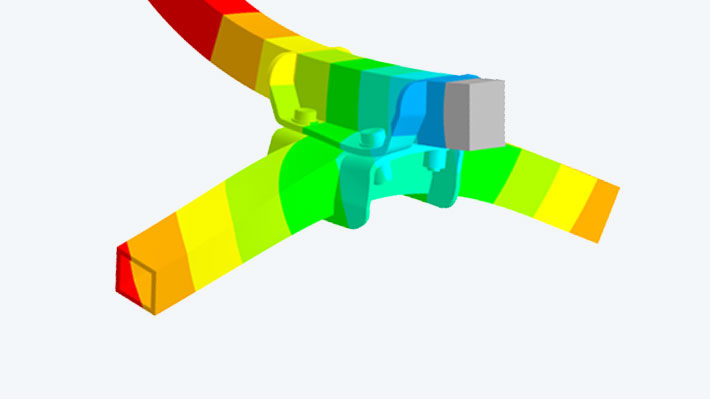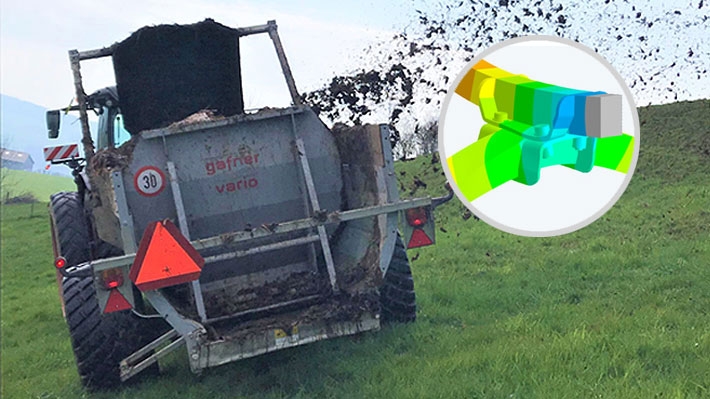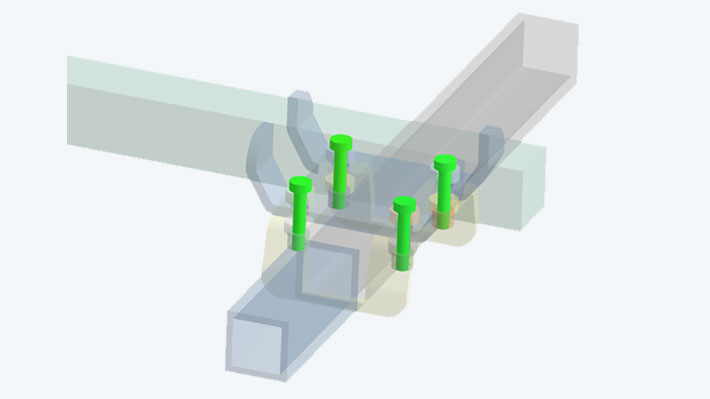Assessment of different designs of a bolted joint
Sector: Automotive (motor vehicles/trucks)Specialist field: Structural mechanicsThe chassis of a spreader in agriculture must be able to operate with a high payload under challenging topographical conditions. Optimal design of the axle bolted connection increases the service life of the connection and the safety of the spreader in operation.
Summary
Task
A chassis is to be examined under maximum axle load and under conditions of a 30° slope. In addition to a strength analysis of the structure, a verification of the bolted connection according to VDI guideline 2230 is to be carried out.
Solution
By using the CADFEM Ansys Extension Bolt Assessment inside Ansys, the verification calculation was performed for each bolt. The extension determines the safety of the connection and provides information about the load in the bolt as well asnd in the parting line. Potential solutions were compared in different design iterations.
Customer benefits
By comparing different design solutions, a suitable design of the bolted connection could be determined. Thanks to the adjustments to the surrounding structure, the load is favorably distributed between bolts and braced components.
Project Details
Task
The company Gafner Maschinenbau AG manufactures spreaders, which are used in agriculture. They enable the transport of several tons of spreading material under challenging topographical conditions. During a strength analysis of the undercarriage at maximum load, it was found that the bolted connection between the axle and the undercarriage was overloaded. The selected connection results in a relatively high compliance of the braced plates, which increases the challenge for a suitable design of the bolted connection. In the bolted connection of the axle, a complex condition of preload, shear force and bending moments in different directions is created. The bolted connection is to be evaluated on the basis of VDI Guideline 2230. Different bolting concepts are to be investigated and the most suitable one for this application is to be determined.

Customer Benefit
The calculations were used to investigate various solutions in the design of the bolted joint. The results were used to make decisions for the optimal design of the connection. Thanks to the findings relating to the complex interaction between bolt type, nominal dimensions, pre-tensioning and design of the braced components, a design can now be selected in which the loads are better distributed among the bolts and components. This increases the service life of the connection and the safety of the chassis in operation. In addition to reducing the load in the bolt, it can be ensured that the bolted joint transmits the forces and moments via frictional locking in the parting line.

Solution
In various design iterations, not only was the load in the chassis frame improved, but various bolting solutions were also investigated. The following aspects of the bolts and braced components were considered:
- Different strength classes of the bolts
- Use of more flexible bolts (bolt diameter and length)
- Increasing the bending stiffness of the braced plates (plate thickness)
- Use of washers or sleeves
By means of Bolt Assessment inside Ansys, an automated and guideline-compliant verification of the bolt stress according to VDI2230 was carried out for each of the different design variants. In addition, the contact ratios in the parting line were evaluated.

Images: © Gafner




